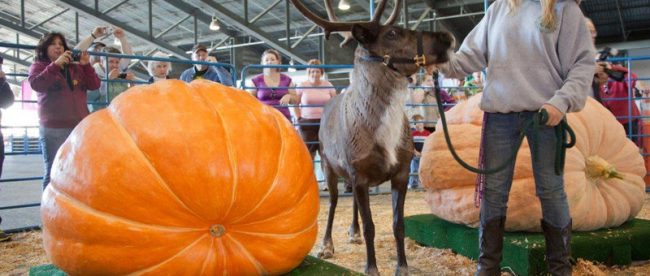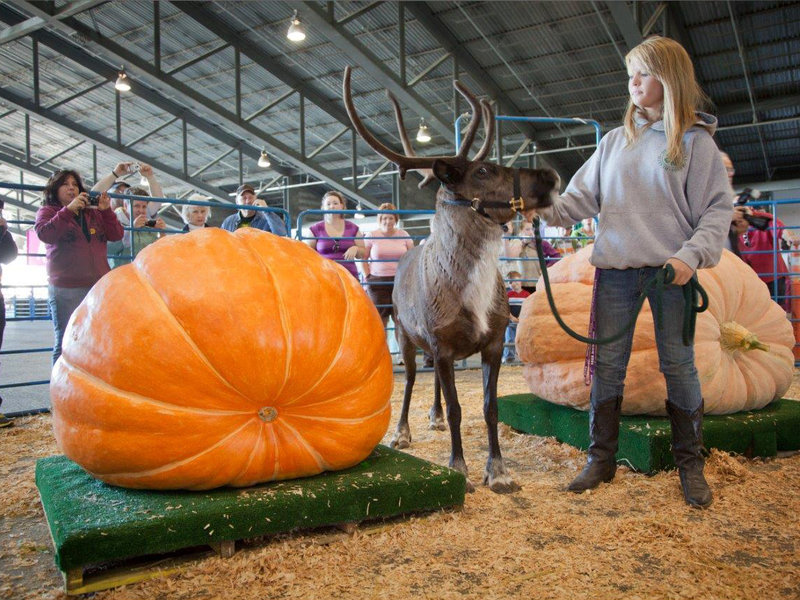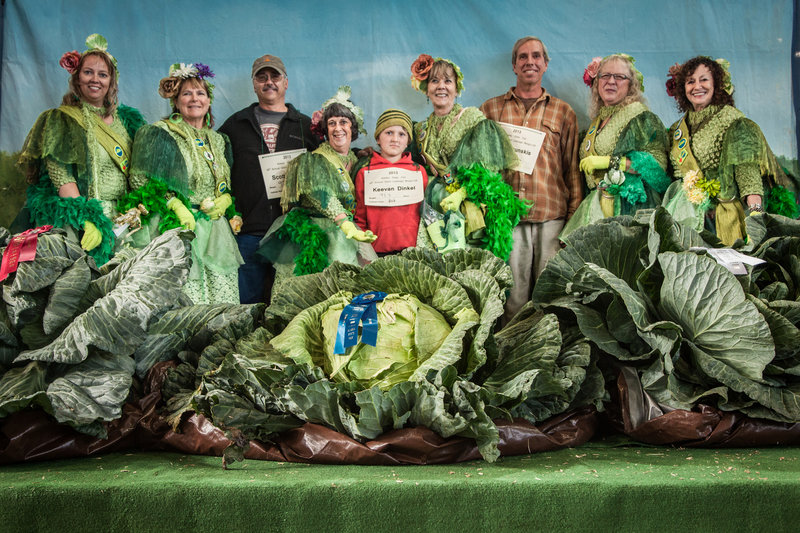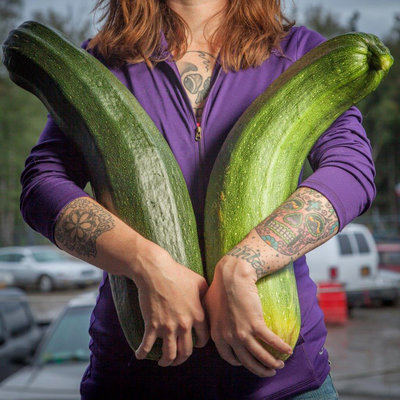The Land of the Really Big Vegetables


In the summer of 2010, a blogger named Andy Herald posted the pictures above to Facebook. The picture on the left is of an old-looking safe which he had re-discovered recently. As he’d recount on his website, the safe was given to him by his grandparents and, 18 years prior, he set the combination and locked it — and, over time, forgot the combo. The top dial had 13 letters and the bottom had the other 13, so with only 169 combos, he realized he could figure out the solution relatively quickly. A few days later, he shared the above-left picture, proving that he had succeeded.
But his readers were more interested in the banana.
In order to show how big — or, more accurately, how small the safe was, Herald leaned a banana against it and added a short line to his blog post: “banana for scale.” For reasons beyond explanation, the “banana for scale” quip struck the funny bones of his readers and went viral. “Banana for scale” became an Internet meme.
But in one place, bananas just won’t cut it. Take a look at these pumpkins — and note in the middle, it’s a reindeer for scale.

Those pumpkins (via NPR) are ginormous. So are these cabbage…

… and these zucchinis.

And: all these giant vegetables came from the same place — the Alaska State Fair.
Every year, for about twelve days in August and September, a few hundred thousand people congregate in Palmer, Alaska, about an hour’s drive from Anchorage. (Here’s a map.) Like most other state fairs, the Alaska one features amusement rides, junk food, live music, carnival games, and more. But what sets the Alaska State Fair apart is the huge vegetable contest.
In 1941, the State Fair ran a contest for the largest cabbage, offering a prize of $25. The winning entry came in at 23 pounds — way, way bigger than the typical two-pounder. In subsequent years, larger and larger cabbages came to the stage, with a record-setting 138.25 pound (68 kg) one winning in 1995. And during that fifty-year period, many other huge vegetables debuted as well — ranging from carrots, radishes, and turnips to broccoli, beets, spinach, potatoes, and of course, pumpkins and zucchini as well.
And you won’t find a comparable collection of super-sized vegetables anywhere else in the United States. That’s because Alaska has something the rest of the country doesn’t: constant sunlight. While the growing season in Alaska is short — per Amusing Planet (which has some more great pictures), it’s only about 105 days — the days during that period are long. Very long. NPR explains why that matters:
It’s Alaska’s summer sun that gives growers an edge, says Steve Brown, an agricultural agent at the University of Alaska Fairbanks who also serves on the fair’s board of directors. Basking in as much as 20 hours of sunshine per day, Alaskan crops get a photosynthesis bonus, allowing them to produce more plant material and grow larger. Brassicas like cabbage do especially well, says Brown.
It doesn’t work for all crops, though — bananas, for example, need a much warmer climate, as do most things we typically consider to be fruits. But if you’re looking for the largest vegetables you’ll ever see, the Alaska State Fair is the way to go.
Bonus fact: In the early 1980s, an electronics retailer named Silo decided to run a sale on a stereo system — $299. It was a pretty good deal, but it became an even better one because of Silo’s ad campaign. Instead of just saying “299 dollars,” Silo’s ads offered the stereo system for “299 bananas,” with the word “banana” acting as a slang term meaning “one dollar.” But some customers took the ad more literally; in 35 stores, mostly in Seattle, customers showed up with a whole lot of fruit. The retailer honored the high-potassium currency. Why? As Michael O’Hare, the company’s vice president of advertising told the press, “You don’t spend all that money on a TV commercial only to make people mad at you.” The company was out $10,465 — minus the value of the bananas — because of the nearly three dozen opportunists.
From the Archives: Soup is Monstrous Food: The gargantuan carrots in our cans of soup.
